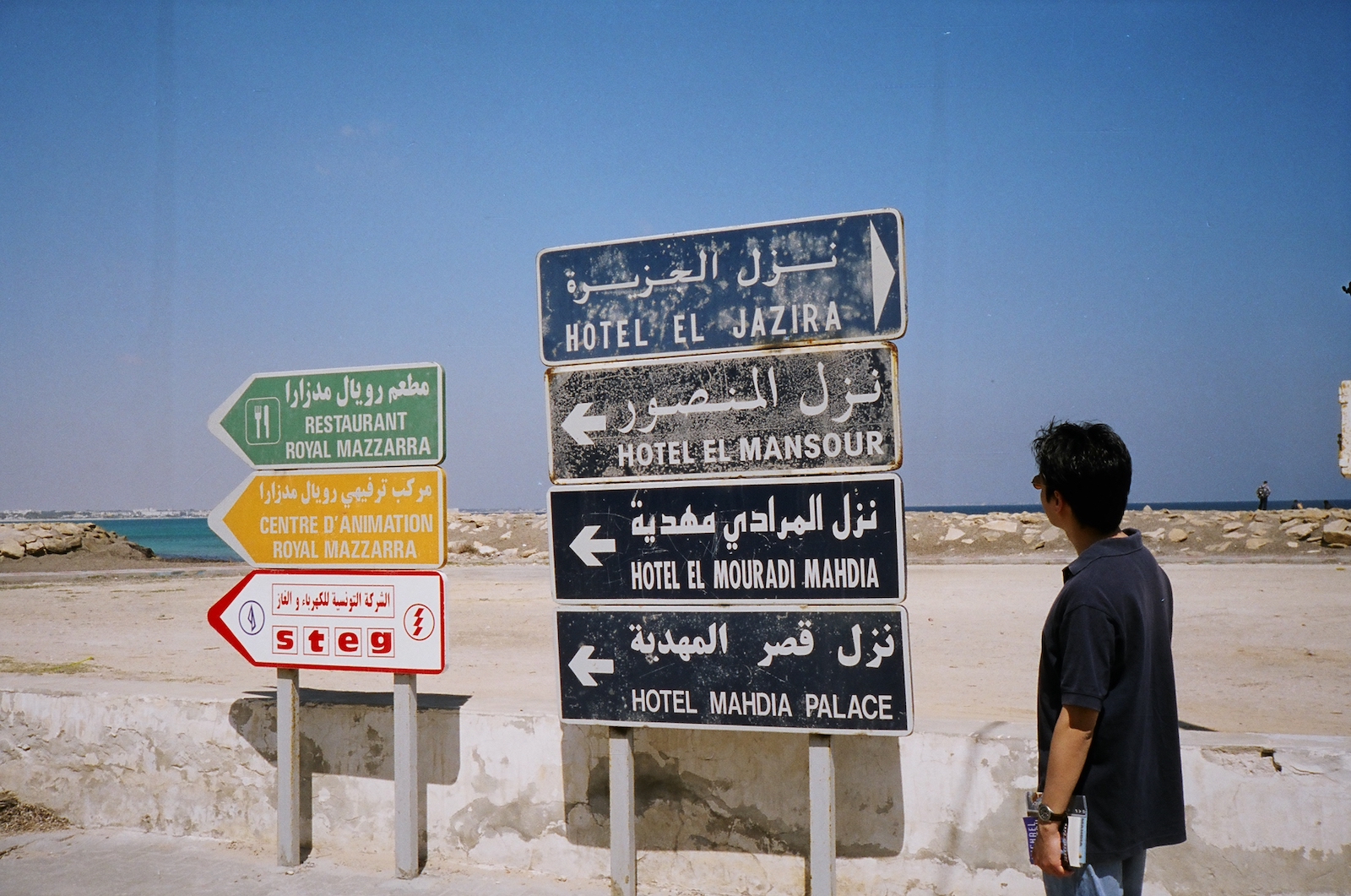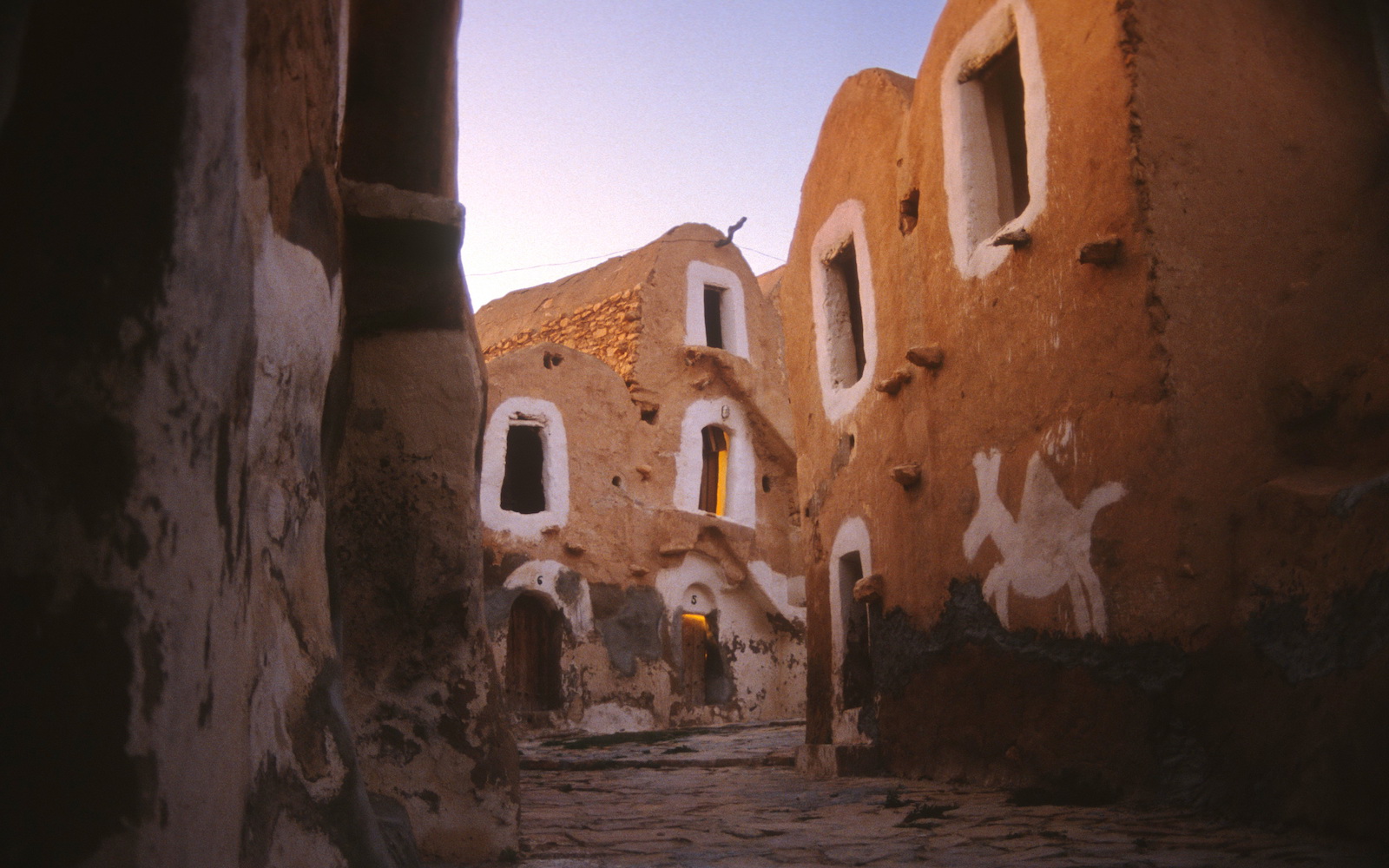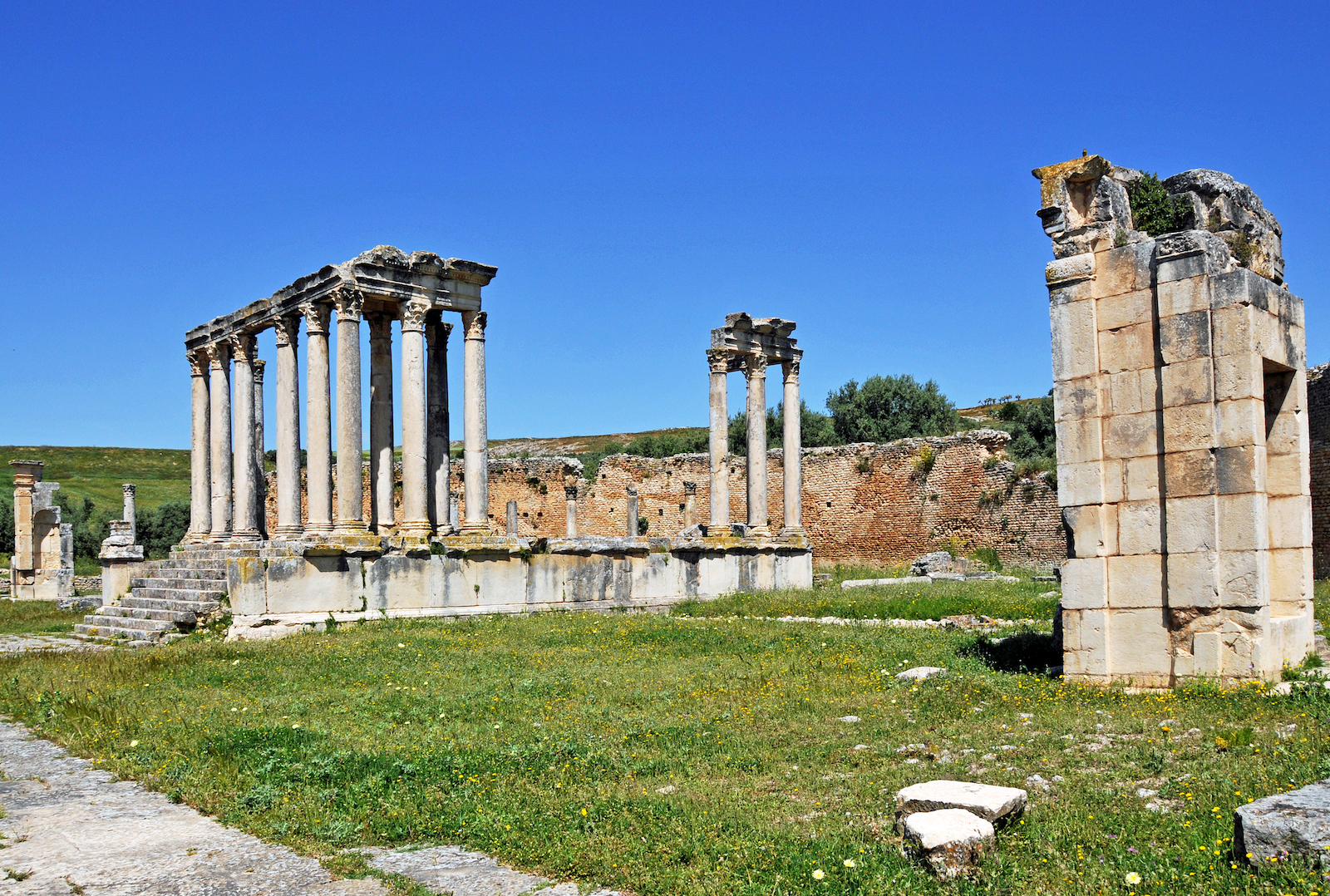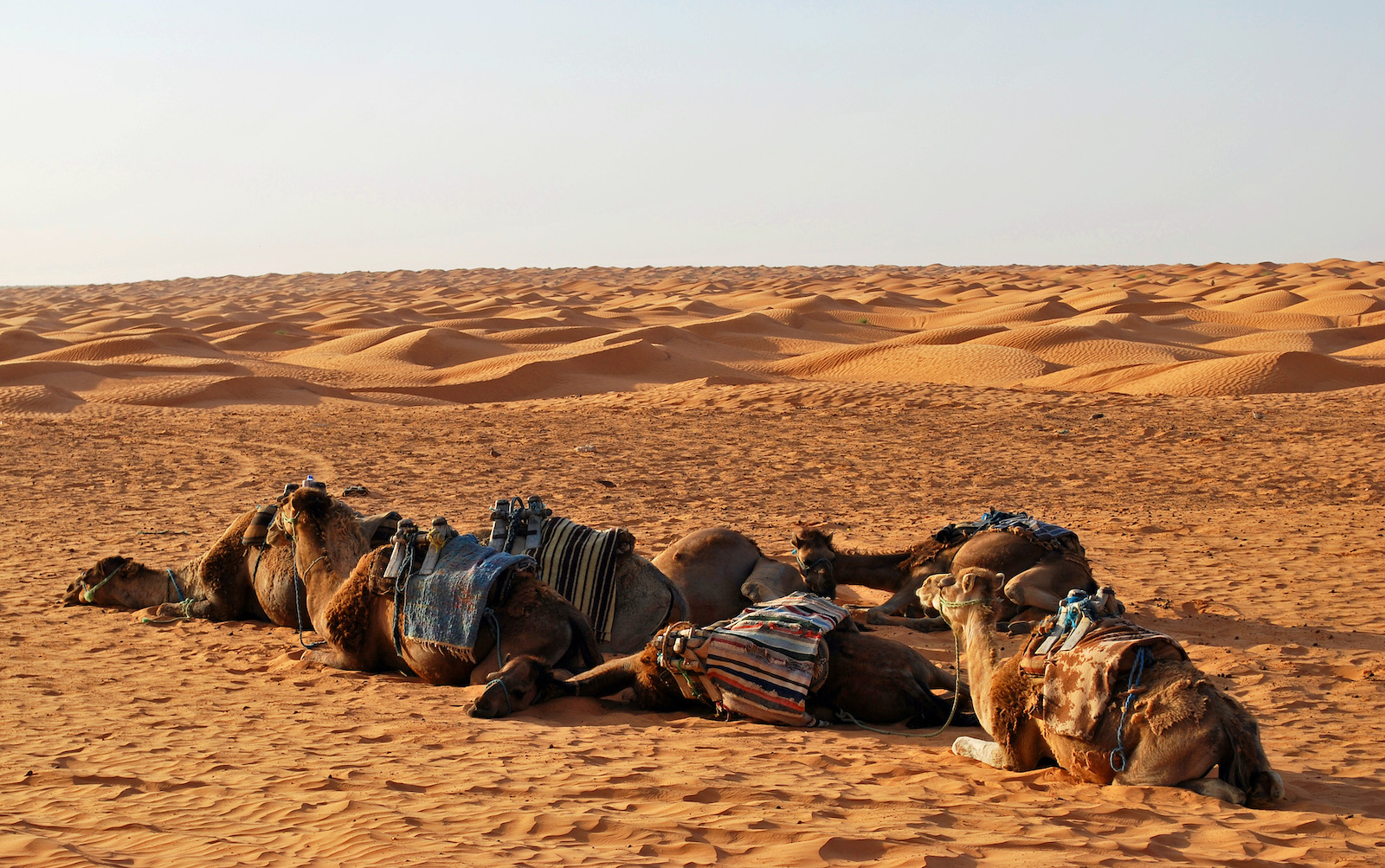A petite country in Africa, Tunisia is best known for its expansive history, diverse landscapes, and cordial people. A great place for a getaway, one of the country’s most popular escapes is the beachside resorts for some rest and relaxation in the sea, sun, and sand.
The Mediterranean Sea borders the north and east coast of the country, while portions of the Atlas Mountains and the Sahara Desert are also located within Tunisia’s borders. Since a set of terrorist attacks in 2015, the country has been working to rebuild the confidence of travelers by guaranteeing their safety.
With over 5 million tourists that visited in 2019, it’s safe to say Tunisia is back on the map and has even been named one of Lonely Planet’s Best in Travel 2020 destinations.
Ya Marhaba – Welcome to Tunisia!

Tunis is the capital of Tunisia and the seat of the national government. The city truly encapsulates the idea of living history, as many of the old-world sites are being turned into modern sensations. The old part of the city includes the famous Medina of Tunis, which is a World Heritage Site.
But as you travel east, the modern world becomes more prominent, and historic architecture begins to blend with the contemporary. Now, the neighborhoods are filled with boutique hotels, restaurants, cafes, and shops for locals and tourists to peruse.
- Culture and Language
- Spending Budget
- How to Get Around
- Top Cities to Visit
- Points of Interest
Culture and Language

As part of Northern Africa, Tunisia’s history begins with the Berber ethnic group who were the first people who had developed a culture in the country. The Berbers were divided into various groups, which were spread throughout all throughout the region.
Tunisia History
The first major change in Tunisia’s history from the Berber people was the influence of the Phoenicians who constructed the city of Carthage. The Roman Empire also tried to command Tunisia, but they ultimately failed as the Vandals and Byzantine Empire took control. It was during this time that the fight between Islam and Christianity began.
With the push of a new religion, the Berbers began to resist but under Ottoman control, Christianity became a minority faith. France also played their part in Tunisia’s history, as they attempted to colonize the area and were part of a battle with other European countries to claim land in Africa.
The French were originally supported by upper-class Tunisians because they did not bring drastic changes. Instead, France was able to claim their land without being overly oppressive.

But with the Néo-Destour Party created by Habib Bourguiba in 1934, French support began to dwindle. By 1956, Tunisia gained its independence and in the following year, it declared itself as the Republic of Tunisia. Since then, Tunisia has struggled to maintain a balanced government and has had periods of tension.
The Arab Spring began in Tunisia in 2010 with protests against the government being one recent event that started to shake the country’s foundation. In 2015, the future of Tunisia was questioned as multiple terrorist attacks shook the nation. Two of the attacks were focused on foreigners and targeted tourist hotspots.
Since then, the country has slowly begun to rebuild its image and foundation. But with lots of hard work, Tunisia is once again a top travel destination. Through it all, the Tunisian people have remained positive. The people are curious about outsiders and welcome them into their country.
However, travelers should respect the local culture. As a predominantly Muslim country, tourists should adopt a modest attitude. Public displays of affection are often frowned upon, and in many places, photographs are forbidden.
Official Language

The languages of Tunisia reflect its diversity and it is one the most multilingual countries in the Arab nation. Modern Standard Arabic is the official language of the country and it is mostly used by the government, media, education, and within everyday life.
However, Tunisian Arabic is also spoken, which is quite different from the Modern Standard variation. Tunisian Arabic is considered to be a native language.
French is also very popular in Tunisia and is taught in schools from the age of 8 onward. Over half the country’s 11.94 million citizens (as of 2021) can speak it and there are many media outlets that also use French. However, English is becoming more popular as Tunisia expands its international relationships.
Spending Budget

It’s important that you take the time to plan your spending budget for the duration of your trip. Tunisia is a country that is very affordable to travel and there are many options that are backpacker friendly.
If you plan accordingly, you can travel on a limited budget and still have a great time. Your biggest considerations for your trip will be the airfare, accommodation, food, drink, and transportation.
Airfare
One of the first parts of your budget will be purchasing a plane ticket to Tunisia. It is rather expensive to fly to Tunisia from the United States and the average cost of a ticket is over one thousand dollars. But there can be a large range in prices due to special deals, when you travel to Tunisia, and how far in advance you book your ticket.
The tourist high season in Tunisia runs during the months of September and October, as well as March through June. It’s also during these months that ticket prices will be more expensive. If you wait to buy a ticket, the cost will also go up. So, you should book your ticket further in advance to save on the cost of a flight.
Accommodations

Accommodation is very affordable and there are many hostels that charge a few dollars a night. This would provide you with a dorm room and shared amenities, although for a little more, you can book a private room.
Hotels are more expensive than hostels, but most are still moderately priced. Luxury accommodations will cost more than one hundred dollars a night on average but will come with better amenities. With plenty of choices, you’re sure to find one that suits your needs.
Tunisia Food
Once you’ve found a place to rest your head, you’re probably going to be eager to try the food. Food not only keeps you energized, but it is also a great way to connect with Tunisian culture. The food highly reflects the country’s various cultures with a strong Mediterranean flair.
Tunisian cuisine is known for heavily using olive oil, tomatoes, seafood, meat, and strong spices.

Shakshuka is a Tunisian stew that’s made with tomatoes and served with bread. Eggs are also included in the stew and are slowly poached in the rich liquid. Couscous is also a favorite dish all throughout North Africa, but in Tunisia, it’s always mixed with a tomato-based sauce.
Commonly eaten with your hands, Brick a l’oeuf is an egg-filled pastry. Slata mechouia is a Tunisian salad that is served with almost every meal. The salad is made with fresh vegetables, topped with eggs, and has a spicy zest.
Dining Out
With plenty of dishes and dining options, many travelers will be curious to know how much they need to accommodate in their spending budget for food. And the answer is – not much. Regardless if you’re at a local restaurant, or mid-range establishment, or choose to splurge on fine dining, you should expect to pay a modest amount.
Unlike most Muslim countries, Tunisia does have local alcohol, like Celtia, and it’s rather popular to drink. While bars are not as openly advertised, they can be found, and alcohol is sold. However, due to it being more taboo, the cost of alcohol is a little higher.
Local wines are popular drinking options and a decent-quality bottle can be bought for a few dollars. In high tourist areas, alcohol can be expensive but still shouldn’t break the bank.
How to Get Around

Another important part of your budget will go towards your transportation while you are traveling around the country. In Tunisia, safety is a major concern for many travelers, and it affects how they choose to travel on their vacation. The most common ways to travel around Tunisia are by air, road, or railway.
Flights
Domestic flights are the fastest way to travel around Tunisia, but they can be rather expensive and that makes them an option for travelers with higher budgets. However, for some travelers, the safety of the airlines has caused worry and they will choose to travel by another method.
Private Drivers and Tours
The roadways are another way to get around, but it isn’t suggested that you drive yourself. Driving in Tunisia can be chaotic and unsafe at times. Instead, tourists are more likely to hire a private driver or book a tour. This is the safest way to travel because you are guaranteed to be provided with a qualified guide who knows the country and safe areas.
However, there are yellow buses that serve as a public transportation system, but you are not likely to experience many tourists using this method. The cost of private drivers or tours (private or group) has a large range of prices based on how long the excursion will last.
Taxis and Trains

In smaller urban areas, taxis and trains are common methods used to get around. Shorter taxi rides will cost a few dollars. Trains are also popular and extremely affordable with many tickets costing less than a dollar.
However, it is important that tourists are always aware of their surroundings and belongings when they use public transportation. For this reason, some tourists feel safer booking private or tour group transportation options.
Walking
Finally, walking is also a way to get around concentrated areas, but it is only safe in tourist areas and with a group. You should avoid any demonstrations and be certain that you don’t wander into dangerous areas. It is also not recommended that you walk in the night.
Top Cities to Visit
Even though Tunisia is a small country, there are still plenty of cities to explore. With a range of landscapes and activities, you can spend days or weeks seeing everything the country has to offer. To help you narrow down where to go, here are the top city destinations in Tunisia.
Tunis

Tunis is mostly visited for its Old Town, which includes an ancient medina at the center. The medina is a World Heritage Site and it draws the line between the Villa Nouvelle, or the modern portion of the capital. There’s plenty to explore between the contrast of worlds, and tourists can also enjoy numerous activities like dining and shopping.
Ghar Al Milh

One of the off-the-beaten-track places that receive less tourism is Ghar Al Milh. But while it may not be as popular, the ancient Ottoman fortress is its star. On the coast, you explore the ports and walk the areas where pirates once roamed.
Matmata

Once a filming location for the early Star Wars films, Matmata is known for its unique, underground houses and Hamada Desert. The ancient houses date back thousands of years and can go as deep as 30 feet into the caves. Now, the area has exploded in popularity and become a major tourist hotspot.
Sidi Bou Said

Filled with the classic Mediterranean image of blue and white, Sidi Bou Said is a gorgeous area that tells a unique story. The area was once a religious sanctuary, but its beauty made it popular as a seaside resort during the Ottoman Empire.
Now, it has remained a popular resort and is visited by famous artists like Simone de Beauvoir and Henri Matisse.
Sousse

Sousse is a World Heritage Site and another popular place amongst Hollywood royalty. Used as the backdrop of the Indiana Jones films as a substitute for Cairo, the palm trees, towers, and mosques of the area are absolutely stunning.
Dougga

Dougga is a well-preserved town of Roman ruins, which have been named a World Heritage Site. With no permanent residents, the town holds the remains of a theater, temples, monuments, and arches. Mosaics were also once a popular sight here, but they have since been removed and preserved in the Bardo Museum in the capital.
Hammamet

With endless beaches, Hammamet is a popular resort town. It has a rich history and well-preserved medina. The ancient seawalls protect the city and date back all the way to the 13th century. The pristine coast has been immortalized in Paul Klee’s painting, ‘Hammamet with Its Mosque’ and still encourages tourists to relax in the sand.
Points of Interest
Alongside the cities, there are also plenty of points of interest in Tunisia. Home to ruins and museums as well as providing access to the Sahara Desert, you’re itinerary will be packed with adventure. Here are some of the top destinations in Tunisia, which regularly attract large crowds of tourists.
El Djem Ampitheatre

One of the most visited ancient Roman sites in Tunisia, El Djem Amphitheatre has been so well-preserved that you can still walk beneath the corridors where gladiators were once held. On top, the seating arrangement gives you the best bird’s eye view and lets you imagine what it was like to watch gladiators in their heyday.
Carthage

While Carthage’s ruins have not been as well-preserved, it’s still an important site in Tunisian history. Telling the history of the Phoenicians who once ruled the area, the development of tourism has made it a safe place for tourists to spend some time and book a few nights in a local hotel.
National Bardo Museum

With a large mosaic collection, the National Bardo Museum is one of the most important collections of historic artifacts in all of North Africa. The museum is located in the capital and is a great way to spend the day learning about Tunisia and all of North Africa’s history.
Unfortunately, the museum was the sight of one of the 2015 terrorist attacks but has had no major incidents since that event.
Grand Erg Oriental

Grand Erg Oriental is one of the safe areas where you can get a glimpse and experience the Sahara Desert. The dunes of the area are popular for adventure tourists who go out on dune buggies or camel treks, but they are also the perfect seat to observe a stunning sunrise or sunset.
Bulla Regia

Bulla Regia has intact Roman houses, which were built underground to beat the heat of summer. Visitors can view the ancient site and walk through the ancient abodes. With a unique look into everyday life, these ruins are unlike any other site in Tunisia.
Get Out and Go

Tunisia packs a punch, even with its small size. While you can explore most of the country in just a short amount of time that doesn’t mean it should be skipped. With impressive sites, ruins, history, and resorts, Tunisia is rebuilding its tourist industry.
As safety has been enhanced, the country is once again becoming a top destination. For travelers who are willing to pave the way, you can explore before the country explodes in popularity and fall in love with its charm.


 What Is Tanzania Most Famous For?
What Is Tanzania Most Famous For?